To achieve a good chameleon cage, it must be done in vertical (being a chameleon an arboreal lizard) and, most importantly, it must be in net made.
The net allows C02 not to stagnate and there is a good supply of fresh air, something that the animal has a particular need.
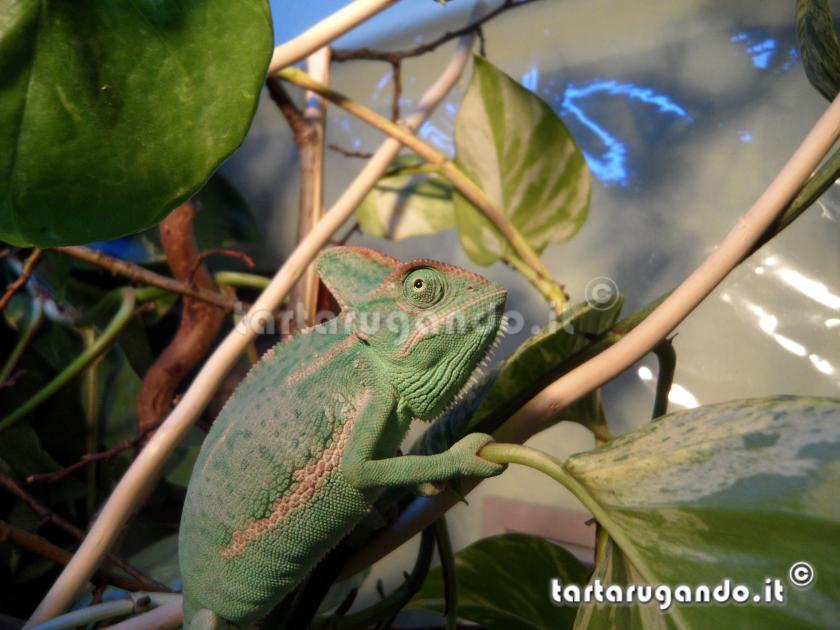
Another reason why we do not use glass or plexiglass on the front for better visibility, is that the chameleon seeing his own reflection could easily stressed out, even feel threatened, which would lead to serious long-term consequences and the pathological narrowing of the life expectancy of the reptile.
The base work is to realize the gleaning of a rectangular parallelepiped and further cover it with a mesh of not more than 0.3 cm.
Being a particularly simple construction can be used various materials. The most common are: wood or PVC pipes.
Other solutions are very functional, and perhaps most elegant, are the use of aviaries for birds or prefabricated chameleon cages that are affordable to moderate price.

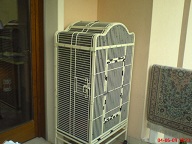
The opening of the chameleon cage is recommended in the front for a simplification of maintenance. When purchasing it is best to check this, as some of these could have it on the side.
And now where do we put it?
Here are a few but important "rules" to follow to find a good location of our chameleon cage:
- Do not place it near doors or windows because of possible air currents.
- We avoid places with temperature changes as the kitchen
- We position the chameleon cage in a poorly attended room so as not to stress the chameleon continuously with our movements and goings.
- It is advised to keep the chameleon cage higher than us to avoid stressful or fear.
- In the warmer months it is appropriate to move the chameleon cage outdoor so the chameleon can benefit from solar irradiation, always making sure that it is a place sheltered from the wind.
Mounting
As already mentioned the chameleon is an arboreal lizard is in this case is for us to set up an environment suitable for its needs.
For this purpose there can serve of simple branches, trees or shrubs. It is important that they are dry and rough enough so as to ensure a firm grip to the chameleon.
To have a clear idea of the correct size, we will have use of the branches of diameter not greater than twice the opening of the clamp of the chameleon.
Are to be avoided bamboo canes as they are too smooth.
Once you set up the "skeleton", you can pass to the "body":
Generally Pothos as they are excellent for:
- The creation of shelters
- The release of an excellent natural moisture
- In case of ingestion (and you will see that it will nourish), they areabsolutely harmless.
Here is a picture:
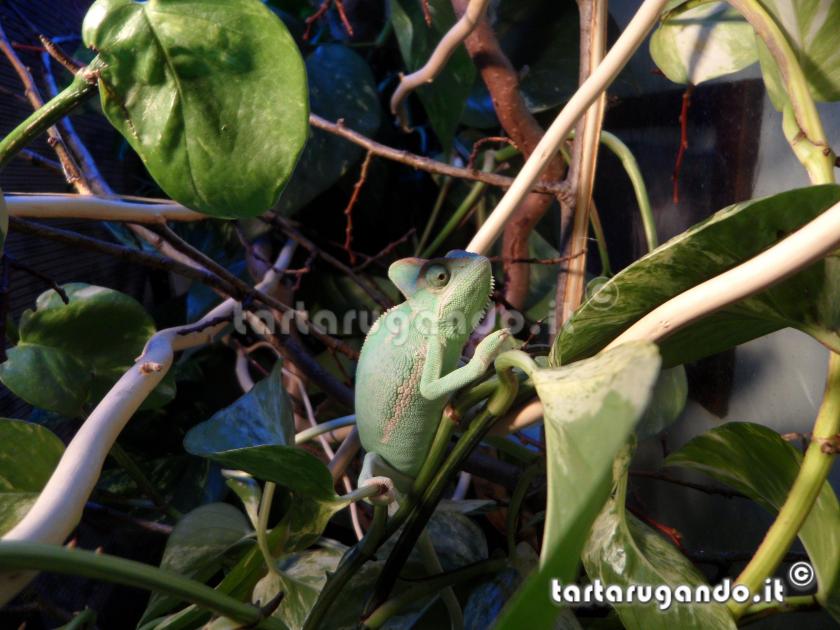
The furniture also includes an elongated container (to prevent the escape of live food) that we will fix in one of the branches (I used the clips).
It's not recommended to leave the live food around the chameleon cage, as we would fail to carefully monitor the feeding of our animal.
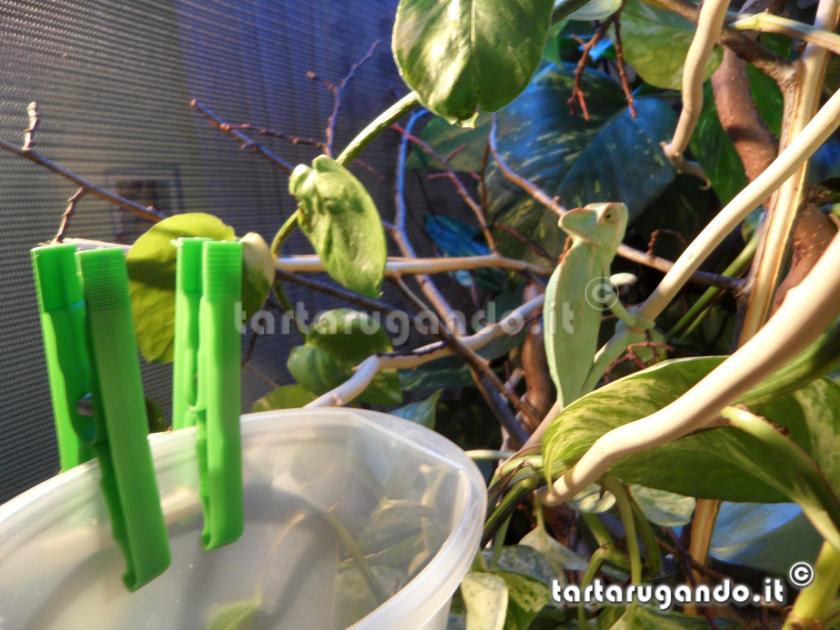
Chameleons not being able to recognize the still water, so they will have to be watered with a dripper which we are going to use a couple of times a week.
We avoid waterfalls or fountains that can be a receptacle for bacteria.
Here is a simple guide to build a great drip with less than 1 euro:
these materials are used:
- Plastic bottle preferably dark (it is more hygienic) by 1/2l, 1l of your choice I've used it as a 1/2l. (Cost 30 cents)
- Flow regulator with check valve for drip. You can find it in pharmacy (cost 60 cents)
- A pair of scissors that we all have at home (and therefore cost 0)
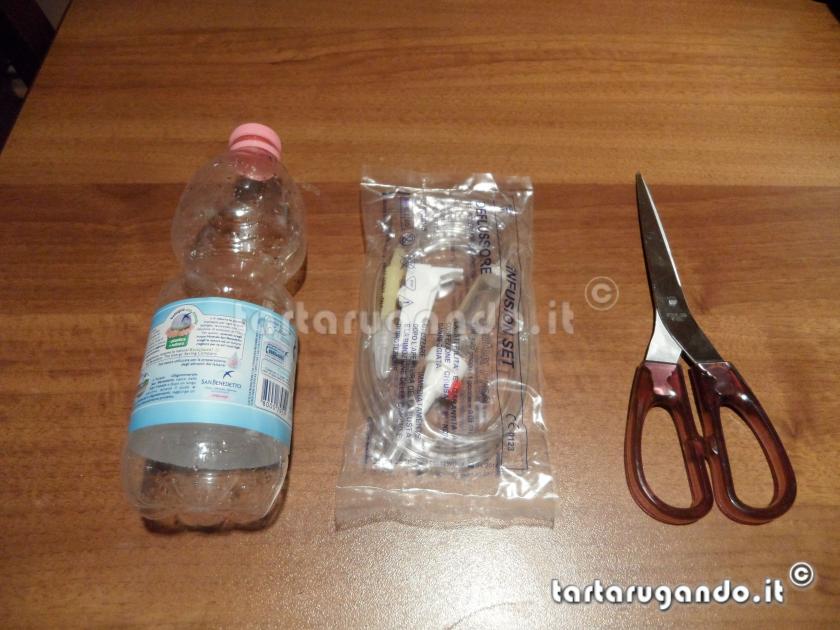
Let's make a small hole in the cap, which then will expand by entering the tubing.
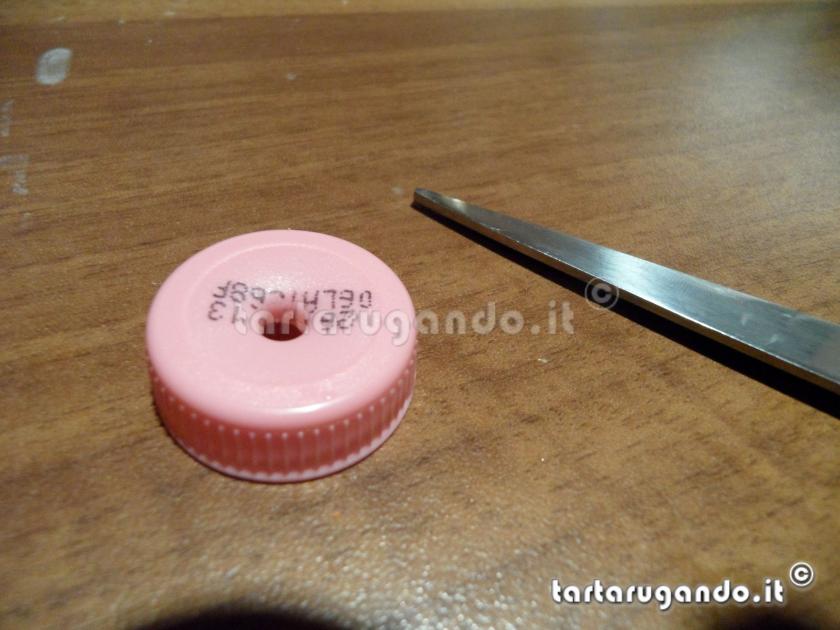
insert the line with the valve open (otherwise the water won’t flow).
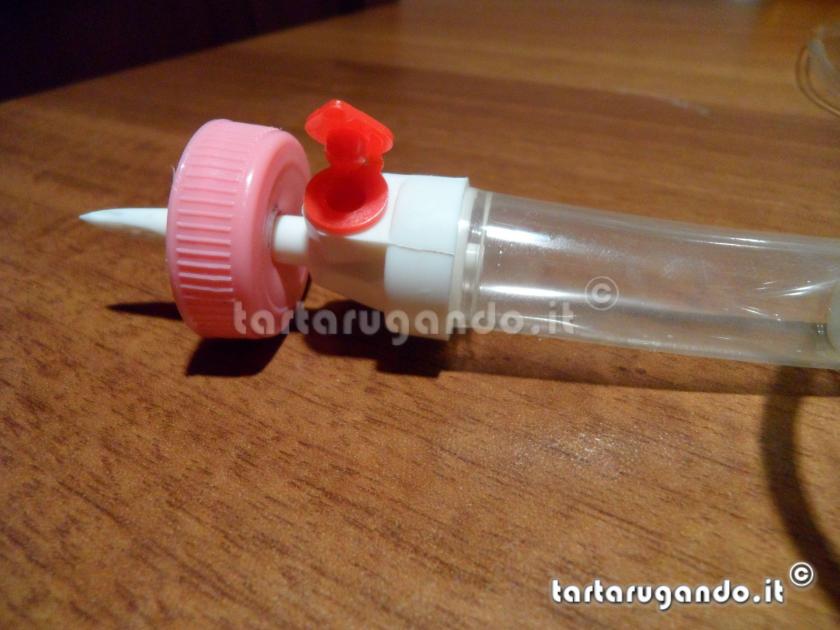
We just have to screw the cap ... and here is our dripper!
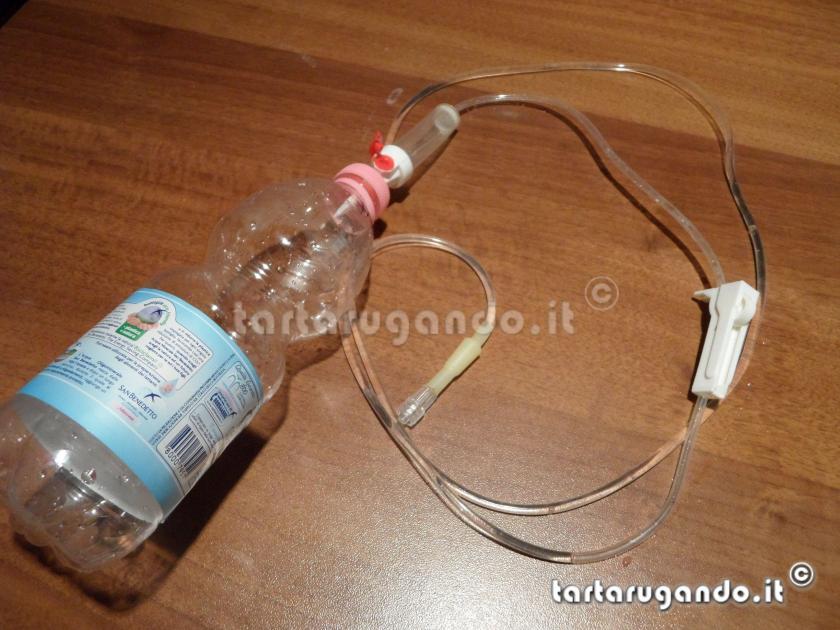
Now you just have to place higher than the chameleon cage (with the bottle set upside down) to drain the water, place the end of the tube above the cage and you're done! You will regulate the flow of water with the controller and when it ends, just fill.
Substrate
The substrate in a chameleon cage is useless and damaging because in a short time with watering and misting it will get soaked: the ideal would be to find a pan easily emptied to be placed under the net floor where you will collect the drain water that can be easily thrown .
Temperature and lighting
We will use a neon tube lighting with the issue of no more than 5% of UVB due to the particular sensitivity of the eyes of the chameleon.
We can place it inside in vertical / horizontal position above or outside the cage.
For the basking point, we will use an opaque spot (always for the speech sensitivity of the eyes of the cama) of 40 or 60W depending on the season, positioned outside of cage at a distance such as to have about 30 ° C on the branch closest to the net and no more than 35 ° C on the same net where the chameleon could climb.
NB = The spot must never be placed into the cage because the animal could burn yourself unconsciously. They are also not recommended ceramic lamps.
The temperatures of the cage will be around 25 ° C while the night will go down to 18 ° C. If you are unable to have these temperatures, it will be necessary to heat the entire room.
As regards the moisture monitor it is not important in a terrarium made in netwhere it is conditioned by air currents or other external events, just spray two or three times a day, a little more in summer, without bothering to measure it. For the temperature, we recommend using an infrared thermometer that will cost a little more but it can be used for all terrariums at a distance. If you do not want to deal with this costs (a few tens of euro) you will have to occasionally measure the temperature at thebasking point and in the medium-high part of the terrarium, where the chameleon will spend most of the time.
I remind you that a chameleon cage must contain only one animal, being chameleons solitary and territorial.
Thanks to marconyse for the valuable advice provided by him in order to make this page as complete as possible.
Here is a picture of a finished chameleon cage
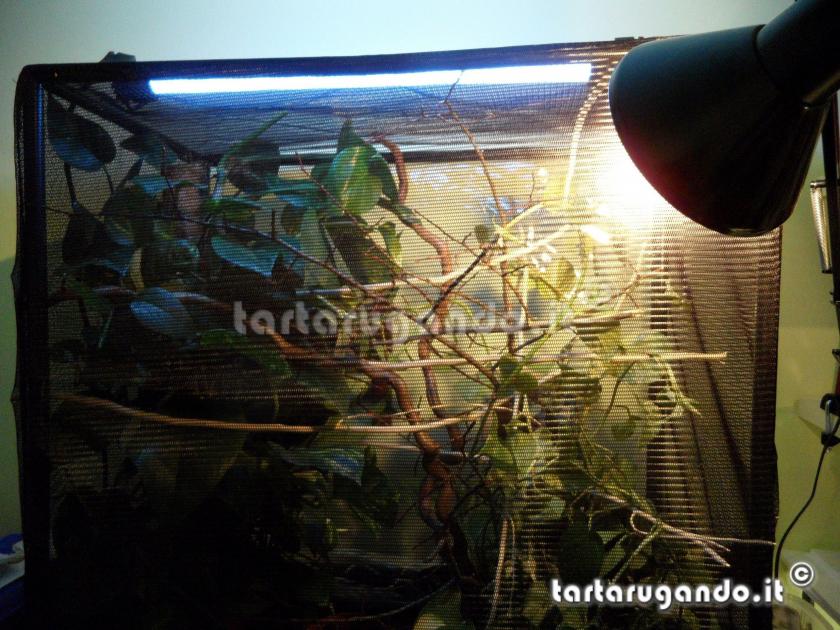
Originally written by tornosubito92
Translated by Drakul
 Benvenuto su Tartarugando, il forum tematico specializzato nell'allevamento di tartarughe e di altri rettili.
Benvenuto su Tartarugando, il forum tematico specializzato nell'allevamento di tartarughe e di altri rettili.





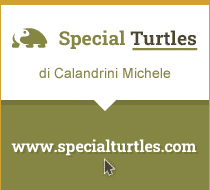
 Elenco delle sezioni
Elenco delle sezioni Elenco delle Categorie
Elenco delle Categorie Nuvola Tag
Nuvola Tag



 Articoli recenti
Articoli recenti